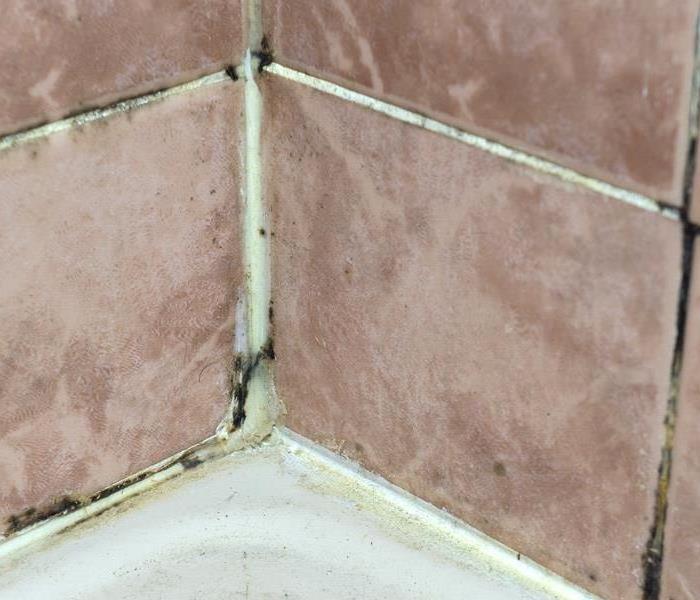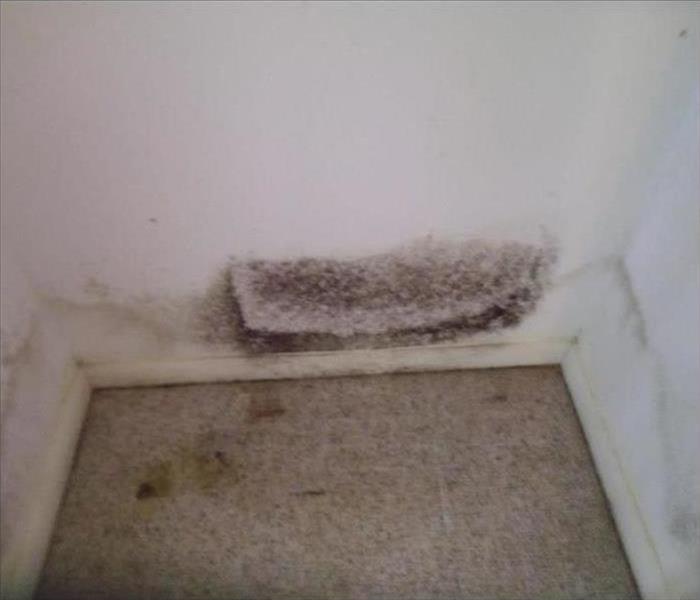Recent Mold Remediation Posts
What To Do If You Have Mold in Your Commercial Kitchen
11/9/2023 (Permalink)
Running a successful restaurant involves many challenges, and one that often goes overlooked is mold management in your kitchen. Mold can thrive in humid climates like Lake Conroe, Texas, and addressing it is vital to maintain a clean, safe, and efficient kitchen environment. In this blog, we'll delve into crucial strategies to help you effectively deal with mold issues in your restaurant kitchen.
Understanding the Impact of Mold
Mold can have a significant impact on both the appearance and functionality of your restaurant kitchen. In a high-humidity environment like Lake Conroe, mold can grow on various surfaces, including walls, ceilings, and even food storage areas. It's not only unsightly but also poses a risk to food safety and customer satisfaction. To tackle mold effectively, consider the following strategies:
1. Regular Inspections
One of the first steps in mold management is implementing a consistent inspection routine. Regularly check for signs of moisture issues, such as water leaks, condensation, or dampness, especially around sinks, dishwashers, and refrigerators. Early detection is key to addressing mold problems promptly.
2. Proper Ventilation
Ensure your kitchen is adequately ventilated to minimize moisture buildup. Effective ventilation can be achieved through the use of exhaust fans and opening windows when necessary to promote airflow. Additionally, ensure that your ventilation systems, including ducts and vents, are cleaned and well-maintained to prevent mold growth within them.
3. Regular Cleaning and Maintenance
Develop a comprehensive cleaning schedule for your kitchen, with a focus on high-humidity areas like dishwashing stations and sinks. Mold can flourish in neglected corners and hidden spaces, so pay close attention to all surfaces. Consider using mold-resistant materials when renovating or updating your kitchen, especially in areas prone to moisture.
4. Promptly Address Water Leaks
Water leaks and plumbing issues are common culprits behind mold growth. Swiftly address any leaks to prevent mold from taking hold. Regularly inspect your restaurant's roof, windows, and doors for potential entry points for water intrusion and address them promptly to maintain a mold-free environment.
5. Control Humidity
Invest in dehumidifiers for areas prone to high humidity, such as walk-in coolers, to maintain humidity levels below 50%. Your HVAC system should also be well-maintained and equipped to control indoor humidity effectively, helping to create an environment less conducive to mold growth.
6. Educate Your Staff
Your kitchen staff plays a vital role in mold prevention. Train them to recognize signs of mold or moisture issues and encourage them to report any concerns promptly. Implement strict cleanliness and hygiene protocols to prevent mold-contaminated food from reaching your customers.
Maintaining a mold-free restaurant kitchen in Lake Conroe is essential for the success and reputation of your restaurant. By diligently implementing these mold prevention measures and maintaining a clean, dry environment, you can uphold the highest standards of food safety and customer satisfaction. Remember that prevention is the key to success in managing mold in your restaurant kitchen. Should you ever encounter mold problems that are beyond your control, our local SERVPRO® of Lake Conroe team is here to assist you with professional mold remediation services. Stay proactive and continue serving your customers with confidence!
Why You Need a Hygienist to Detect Mold in Your Home or Workplace
5/10/2023 (Permalink)
 A hygienist is necessary for mold detection.
A hygienist is necessary for mold detection.
Mold growth in your home or workplace can cause problems if left unchecked. Mold spores can cause issues, so it's important to identify and remove mold as soon as possible. While some mold growth may be visible, other hidden mold can go undetected. This is why you may need a hygienist to check for mold. In this blog, we'll explore the reasons why a hygienist is necessary for mold detection.
What is a hygienist?
A hygienist is a professional who specializes in environmental health and safety. In the context of mold detection, a hygienist is trained to identify mold growth, assess the extent of the problem, and determine the best course of action to remediate the issue. They have the knowledge and expertise to evaluate indoor air quality, moisture levels, and ventilation systems.
Proper Identification
Not all mold is visible, and it can grow in hard-to-reach places. A hygienist has the necessary tools and expertise to detect mold growth that may be hidden from view. They use specialized equipment such as thermal imaging cameras, moisture meters, and air samplers to identify mold growth accurately.
Objective Assessment
A hygienist can provide an objective assessment of the extent of the mold problem. They can identify the type of mold present and determine the potential risks associated with it. This information can help you understand the severity of the problem and make informed decisions about the remediation process.
Remediation Plan
A hygienist can provide a detailed remediation plan that outlines the steps required to remove the mold safely and effectively. This plan will include the type of cleaning and disinfection required, the necessary protective gear for the workers, and the disposal of contaminated materials.
Clearance Testing
After the mold remediation process is complete, a hygienist can conduct clearance testing to ensure that the mold has been properly removed. Clearance testing involves air and surface sampling to confirm that mold spores are no longer present.
In conclusion, mold growth can cause serious issues if not addressed properly, and it's important to identify and remove it as soon as possible. A hygienist is necessary for mold detection because they have the expertise and tools to accurately identify mold growth, provide an objective assessment of the problem, develop a remediation plan, and conduct clearance testing. If you suspect mold growth in your home or workplace, it's essential to hire a certified hygienist to ensure that the mold is properly identified and removed.
How Long Does a Landlord Have To Fix a Mold Problem?
12/19/2022 (Permalink)
 Mold damage in a Conroe,TX home
Mold damage in a Conroe,TX home
When you first move into a new place, it's important to check for mold. Mold can form easily in buildings with poor ventilation and low humidity, which is why it's so common in small apartments or homes with no air conditioning. If you notice mold growing in your home, you should immediately inform your landlord or building management company so they can take action to fix the problem. But how long do they have to respond? And what happens if they don't do anything at all?
Landlord Responsibility
In general, the landlord is responsible for any mold growth caused by a defect in the property. If there had been a leaky pipe and water has gotten into the wall and caused a mold problem, then it will likely be the landlord's responsibility to fix that problem. If there was no leaky pipe but rather someone who lived in another apartment had tracked in mud from outside and tracked it onto your floor mat where it dries out and grows, then that would likely not be considered an issue for which your landlord should take responsibility because it occurred outside of their control (i.e., due to someone else's actions).
Expect Reasonable Action
The law requires landlords to take all reasonable steps to control and abate the mold. If they fail to do so, you can sue them for any resulting damages or loss of use of your home—including medical bills and lost wages. Your landlord is responsible for providing a safe living environment for you and your family members, including children under 18 years old. If they don't take steps to protect against mold growth in their units, they could be held liable if someone gets sick from exposure to it during a tenancy (or even afterward).
The length of time it takes for mold remediation depends on the size of the problem:
- Small (less than 20 square feet), contained areas that can be cleaned may only need to wait 24 hours before being able to reoccupy them. Any other space will require more than 24 hours before being reoccupied.
- Large areas (>20 square feet) or ones where you can't easily access all surfaces should be given at least 48 hours before someone can reoccupy them without any concerns about exposure to mold spores or mycotoxins.
Mold Inspections
A mold inspection is an important step in the process of dealing with a mold problem in your rental property. A qualified inspector will be able to do a thorough investigation and determine if you have a mold issue, how serious it is, and what steps need to be taken next. The inspector should always wear protective clothing when inspecting for mold (including gloves, goggles, and a mask) because if there's any chance that they'll inhale or ingest spores, they need to protect themselves from these harmful substances.
Mold inspections often cost between $100-$300 per hour depending on where you live and which company performs it. Make sure you find an inspector who offers competitive rates before hiring them. Most inspectors will provide readings on their findings either verbally or via written report after completing testing; however, some may require additional time for analysis before providing this information. If this seems like too much time than necessary just ask them about it directly--they should be upfront about any delay.
Mold Mitigation, Management & Remediation
Mold remediation can be a complex process that requires specialized skills. There are many variables involved in how long it will take to remediate your home or apartment, including the size of the affected area, moisture levels inside and outside of the property, and airflow throughout the structure.
Additionally, mold mitigation may require determining whether there are other underlying conditions within your property (such as leaks) that need to be addressed before conducting any repairs; sometimes those repairs can take longer than just removing the mold itself. While most professionals will have an estimate for you before beginning work on your home or apartment building so that you know exactly what to expect financially without surprises down the road (and so they know what kind of budget they've got), some jobs are more complicated than others—so it's always worth asking about if something goes wrong during remediation.
You and your landlord should be able to work together to solve the problem of mold. If you have a mold problem, you should first contact your landlord and ask them to inspect it. Once they do so, they will either fix the problem or tell you how long it's going to take before they do something about it.
If you have a mold problem in your Conroe, TX rental property, give SERVPRO of Lake Conroe a call today!



 24/7 Emergency Service
24/7 Emergency Service

